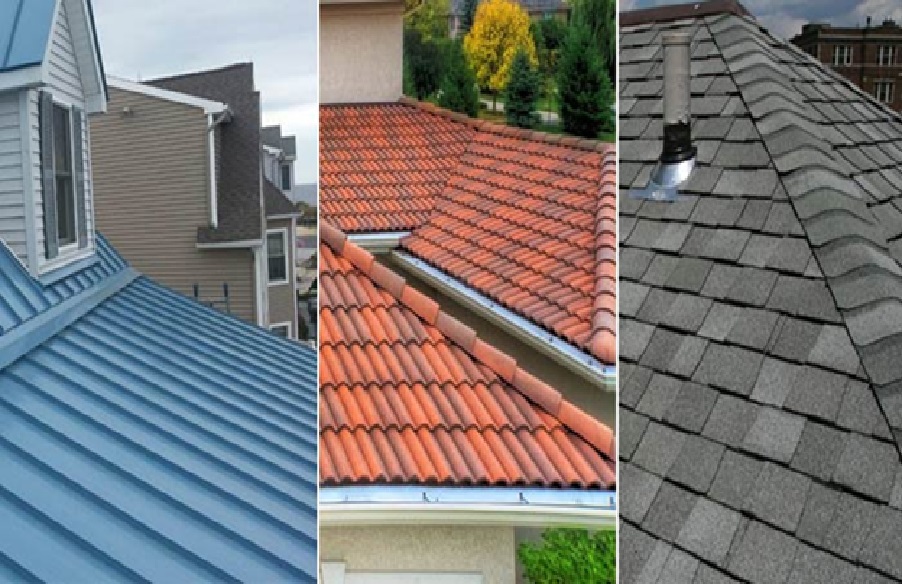The Significance of Heritage Roofs: More Than Just Shelter
Understanding the Cultural Impact of Historic Roofs
Historic roofs are often much more than mere structures to shield buildings from the elements; they serve as a testament to the cultural and artistic heritage of communities. These roofs reflect the architectural styles, techniques, and materials prevalent during the time they were constructed, encapsulating the history and identity of a region. From charming thatched cottages in rural England to ornate copper rooftops in historic American cities, each roof tells a unique story. It embodies the craftsmanship and lifestyle of the era, offering insights into societal values and technological advancements. The cultural impact of these roofs extends beyond their aesthetic appeal; they are integral components of our collective memory and shared heritage. Preservation of historic roofs thus plays a critical role in maintaining the character of neighborhoods, fostering a sense of belonging, and connecting newer generations with their past.
Why Preserving Architectural Integrity Matters
The preservation of architectural integrity is paramount when restoring historic roofs because these structures often represent unique craftsmanship and fine details that convey the artistry of a period. Retaining original materials and construction methods not only preserves the aesthetic values but also ensures the durability and functionality of the roof. Each architectural detail, from the pitch of the roof to the style of the eaves, contributes to the overall coherence and historical value of the building. When restoring a heritage roof, adherence to the original design principles prevents dilution of the historical narrative, allowing for a true reflection of the architectural lineage. This integrity also supports local economies by attracting heritage tourism, providing both economic and communal benefits by enhancing heritage awareness.
The Connection Between Roofs and Community Identity
Roofs significantly contribute to community identity, acting as visual landmarks that evoke a sense of pride among residents. Historic roofs can foster social cohesion by connecting individuals to their shared heritage, creating a collective narrative that enriches local history. In many towns and cities, iconic roofs can symbolize the legacy of the area, reflecting its evolution over time while serving as reminders of its significance in the broader historical context. The stories that these roofs encapsulate can ignite community initiatives, ranging from educational programs to local history projects, reinforcing bonds among residents. Thus, roof restoration not only maintains architectural beauty but also reinvigorates community spirit, encouraging citizens to reconnect with their roots.
Techniques and Materials: Crafting Authentic Roof Restorations
Traditional Materials: The Heart of Authentic Restoration
The use of traditional materials is vital in preserving the authenticity of historic roofs. Often, this involves sourcing original materials such as slate, clay tiles, thatch, and wooden shingles, which have proven durable over centuries. Each material has its unique characteristics and historical significance. For instance, slate roofs are esteemed for their longevity and resistance to weathering, often seen in the classic architecture of Wales and New England. Reusing reclaimed materials can also be a sustainable practice that not only reduces waste but also maintains architectural continuity. Furthermore, understanding the local geology can help restorers select the most appropriate materials, thus ensuring that the roof not only harmonizes with the existing fabric of the building but also withstands the local weather conditions for generations.
Modern Innovations: Blending Tradition with Technology
While traditional techniques remain essential for authentic restoration, modern innovations can enhance both the process and results of roof restoration. Today, advancements in materials science have introduced eco-friendly alternatives that can improve energy efficiency and longevity without compromising historical accuracy. For example, modern synthetic materials designed to mimic the appearance of traditional tiles are gaining popularity due to their lightweight properties, ease of installation, and minimal maintenance needs. Additionally, technologies like 3D modeling allow architects and restorers to visualize and plan restorations with precision, ensuring that new work seamlessly integrates with the old. Employing drones for detailed assessments and aerial inspections also aids in identifying issues quickly, contributing to more efficient conservation strategies.
Skillful Craftsmanship: The Artisans Behind the Restoration
At the heart of successful roof restoration lies the skillful craftsmanship of artisans who dedicate their lives to preserving heritage structures. These specialists possess a wealth of knowledge not only about historical roofing practices but also about the appropriate handling of traditional materials. Expert roofers often undergo extensive training, sometimes learning from generational family trades that have survived for decades. By honing their skills in time-honored methods, these craftsmen are able to bring a level of artistry and precision that mechanized processes cannot achieve. Their understanding of the nuances of pitch, drainage, and ventilation ultimately results in roofs that are not only aesthetically appealing but also structurally sound. Fostering such talent through apprenticeship programs can help ensure the survival of this invaluable craftsmanship for future restoration projects.
Challenges in Historic Roof Restoration: Navigating the Complexities
Dealing with Weathering and Time: What to Expect
Over the years, historic roofs face considerable challenges due to weathering and the ravages of time. Seasonal changes, environmental pollution, and biological growth like moss or lichens can lead to chronic issues such as leaks, structural weakness, or aesthetic degradation. Recognizing these challenges is crucial for restorers, as it allows for proactive maintenance strategies rather than reactive repairs. For instance, understanding how materials weather over time can inform when a roof needs to be cleaned, treated, or restored entirely. In many cases, a thorough assessment involving both visual inspections and advanced diagnostic tools such as thermal imaging can help identify areas of concern before they escalate into expensive, extensive damage. Effective planning and a comprehensive understanding of aging materials and techniques will lead to more sustainable restoration outcomes.
Legal and Regulatory Hurdles: What Every Restorer Should Know
Restoring historic roofs often involves navigating a complex landscape of legal and regulatory hurdles that can vary significantly from one locale to another. Various protective designations, such as landmark statutes or heritage conservation grants, may mandate adherence to stringent guidelines regarding restoration techniques and materials used. Additionally, obtaining necessary permits can be a lengthy and bureaucratic process, potentially slowing down restoration timelines. Understanding these regulations beforehand is essential for restorers, as compliance can significantly impact project costs and timelines. Engaging local heritage preservation authorities early in the project can ensure that restorers remain compliant and may even uncover available resources or funding that can support the restoration efforts. It’s crucial to actively participate in community consultations and contribute to discussions about local heritage preservation policies to advocate for the value of these initiatives.
Community Involvement: Building Support for Restoration Projects
Community involvement plays a pivotal role in the success of historic roof restoration projects. Engaging local stakeholders, including residents, businesses, and government entities, can provide valuable input and build a collective sense of ownership. Organizing workshops, informational sessions, and fundraising activities can help garner community support while raising awareness about the importance of preserving heritage roofs. Moreover, showcasing the value of these projects through art displays, public talks, or guided tours can inspire local pride and investment in community heritage. Programs enabling local volunteers to participate in restoration efforts not only contribute to manpower but also provide experiential learning opportunities that deepen the connection between individuals and their shared history. By fostering a collaborative approach, communities can amplify their voices and efforts to maintain their architectural heritage.
The Future of Heritage Roofs: Sustainable Practices for Generations to Come
Eco-Friendly Alternatives: Green Solutions in Restoration
As the global conversation on sustainability intensifies, so does the need for eco-friendly practices in historic roof restoration. Preserving these structures provides an opportunity to integrate green solutions that enhance energy efficiency without compromising the integrity of historical design. Innovations such as solar panels that are aesthetically integrated into roofs or green roofing systems that support vegetation can provide modern functionality while respecting historical aesthetics. Furthermore, utilizing materials sourced sustainably, such as responsibly harvested wood or recycled slates, helps reduce the ecological footprint of restoration projects. Establishing standards and guidelines for assessing and implementing these green technologies can significantly contribute to the longevity of heritage roofs while promoting sustainable practices in the preservation industry.
Engaging New Generations: Teaching Heritage Skills
As the cycle of restoration continues, it is essential to engage new generations in the valuable heritage skills required for restoration. Educational programs, workshops, and apprenticeships can provide hands-on training in traditional craftsmanship, ensuring its persistence in modern contexts. Schools and universities can collaborate with historical societies to create curriculum guides that incorporate local architectural history alongside hands-on restoration techniques. Awareness campaigns targeting youth can ignite interest in heritage conservation, fostering a sense of stewardship and responsibility for local heritage. By embedding this passion in education, communities ensure that future generations are equipped with the knowledge and skills needed to continue preserving their architectural legacies.
Visionary Projects: Case Studies of Successful Restorations
Across the globe, numerous successful historic roof restoration projects serve as inspiring case studies showcasing the effective blending of tradition and innovation. For instance, the restoration of the Notre-Dame Cathedral in Paris incorporates traditional craftsmanship while integrating modern restoration technology, ensuring that this iconic structure can continue to shine for decades to come. Similarly, efforts in preserving the timber roofs of ancient Tudor houses highlight eco-friendly practices alongside traditional methods, resulting in both sustainable outcomes and educational platforms for community engagement. Analyzing and documenting these success stories can provide valuable insights and strategies for other restoration projects, allowing for the refinement of approaches and practices aimed at preserving heritage roofs worldwide. By showcasing restored structures, communities can further promote the importance of architectural heritage, garnering support for ongoing preservation efforts.







